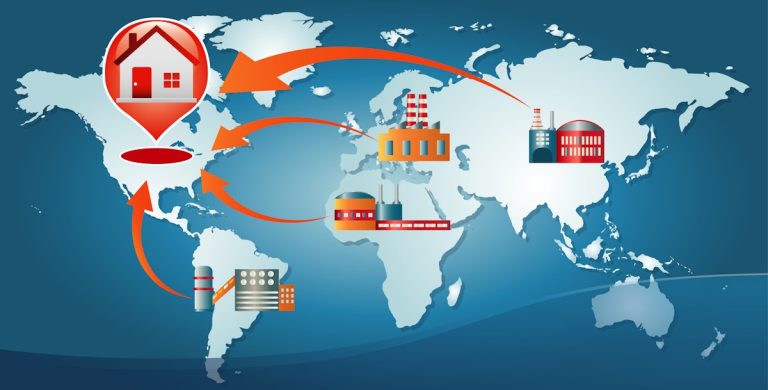The term “automation” has existed for over 100 years, but has continued to evolve over time as technology is progressing, allowing machines and software to perform more and more complex tasks which once required human intervention. More than a century ago, the industrial revolution introduced machines that automate countless jobs. However, in the past 20 years, we have started to bring this machine online – unlocking data to improve efficiency and performance.
While software -oriented industries quickly digitized, the physical world, especially in sectors such as logistics and freight, has been late. By applying technology to the physical domain, we can unlock the same flexibility and adaptability that have revolutionized the digital world while allowing labor to focus on greater value tasks, improve decision-making and improve global efficiency, ultimately lead to innovation and a better service of services in sectors such as logistics and management of the supply chain. According to Gartner CEO annual survey82% of the high intensity industries of the supply chain plan to increase digital investments.
Although technology has certainly evolved, one thing has remained constant, but throughout this period, without collaboration and coordination between people, processes and systems, even the most advanced automation cannot operate effectively or cause significant efficiency in the supply chain. Technological collaboration is essential for the optimization of operations, maximizing efficiency and maintaining a competitive advantage.
1. Advanced solutions with less time to market
In partnership with experts – whether in transport management, warehouse automation or real -time monitoring – allows companies and their employees to access advanced solutions without the burden of building them from zero. By consolidating suppliers and taking advantage of the proven technology of a trusted partner, companies can eliminate ineffectiveness, reduce integration challenges and focus on the supply of a transparent customer experience.
This approach accelerates not only the marketing time, but also guarantees access to advanced innovations without the burden of continuous development and maintenance. Fewer suppliers mean fewer potential failure points, better communication and more cohesive and reliable service – by putting faster, more efficient and profitable solutions for customers. It also gives employees and workers the possibility of concentrating their expertise on what they have been hired to make it technological development or customer experience.
2. Improved growth and customer experience
Small family businesses, such as cross-docks and small trucking fleets, can considerably benefit from the use of the latest technologies to develop their operations and improve the quality of services. By adopting digital tools such as real -time monitoring, road optimization software and stock management systems, these companies can rationalize operations, reduce costs and increase efficiency. A report From the American Chamber of Commerce has shown that 81% of small businesses plan to increase their use of technological platforms.
Technology allows better communication with customers, more precise delivery windows and an improvement in waves management, allowing these companies to compete with large companies. In addition, the implementation of automated systems for planning, invoicing and customer service can help reduce manual errors and release time to focus on growth. By adopting technology, small businesses can provide faster and more reliable service, establish stronger customer relationships and put their operations on a profitable manner.
3. Best communication and connectivity
All logistics companies cannot do everything at the highest level of execution. The integration of different technologies that communicate transparently with each other is essential to build a more resilient supply chain. When systems such as inventory management, transport management and command execution platforms are connected and share data in real time, companies acquire better visibility and control over their operations. This interconnection allows faster identification of disturbances, such as delays or shortages, and allows faster decision -making to mitigate risks.
In addition, the ability of technologies to exchange information promotes collaboration between different stakeholders – support, distributors and logistics suppliers – aligning us all parties and can quickly respond to changes in demand or unforeseen events. In the end, this level of technological coordination improves agility, reduces downtime and strengthens the capacity of the supply chain to adapt and recover challenges.
4.
Technological collaboration can considerably improve the balance between professional and private life for employees by automating routine tasks, reducing manual workloads and rationalizing processes. By integrating advanced tools such as road optimization, predictive analysis and automated monitoring systems, employees can focus on greater value tasks that require problem solving and decision -making, rather than being bogged down by repetitive tasks. To avoid the common traps of digital transformation, according to MCKINSEYCompanies must drive from top to bottom by adopting a man -centered approach by transforming fear into curiosity and promoting the mentalities of opportunity and continuous learning.
This increased efficiency not only improves productivity, but also allows employees to work more flexible hours, reduce overtime and manage their personal commitments more effectively. The technology dealing with operational complexities, workers are authorized to do their work more effectively, which leads to less stress, greater work satisfaction and a balance between professional and private life, ultimately benefiting both employees and the company.
5. Risk antartiGULATION
Risk mitigation is an essential aspect of any successful logistics operation, and technological collaboration plays a key role in minimizing potential risks in the supply chain. Technology allows a more proactive approach to risk management, allowing companies to anticipate problems before degenerating and quickly implementing corrective actions. In addition, collaboration between logistics partners guarantees that data is shared transparent, which reduces the probability of poor communication or errors that could cause expensive setbacks. This interconnection not only helps to mitigate operational risks, but also to improve the overall resilience of the supply chain, to ensure that companies are better equipped to adapt to changes, maintain the quality of service and, ultimately, protect customer satisfaction.
In today’s rapidly evolving logistics landscape, no business can exceed in isolation. Collaboration guarantees agility, innovation and resilience through the supply chain.


